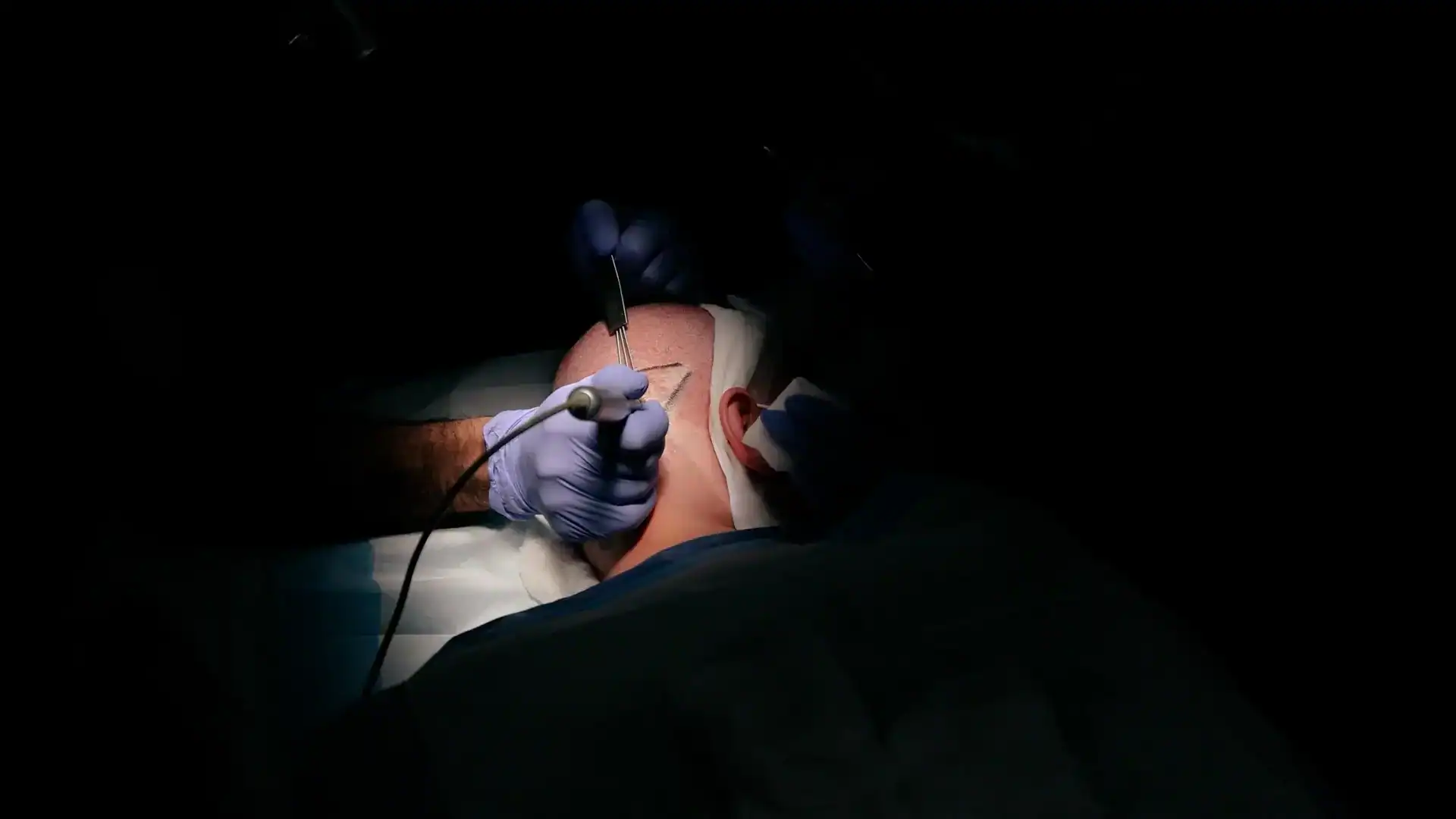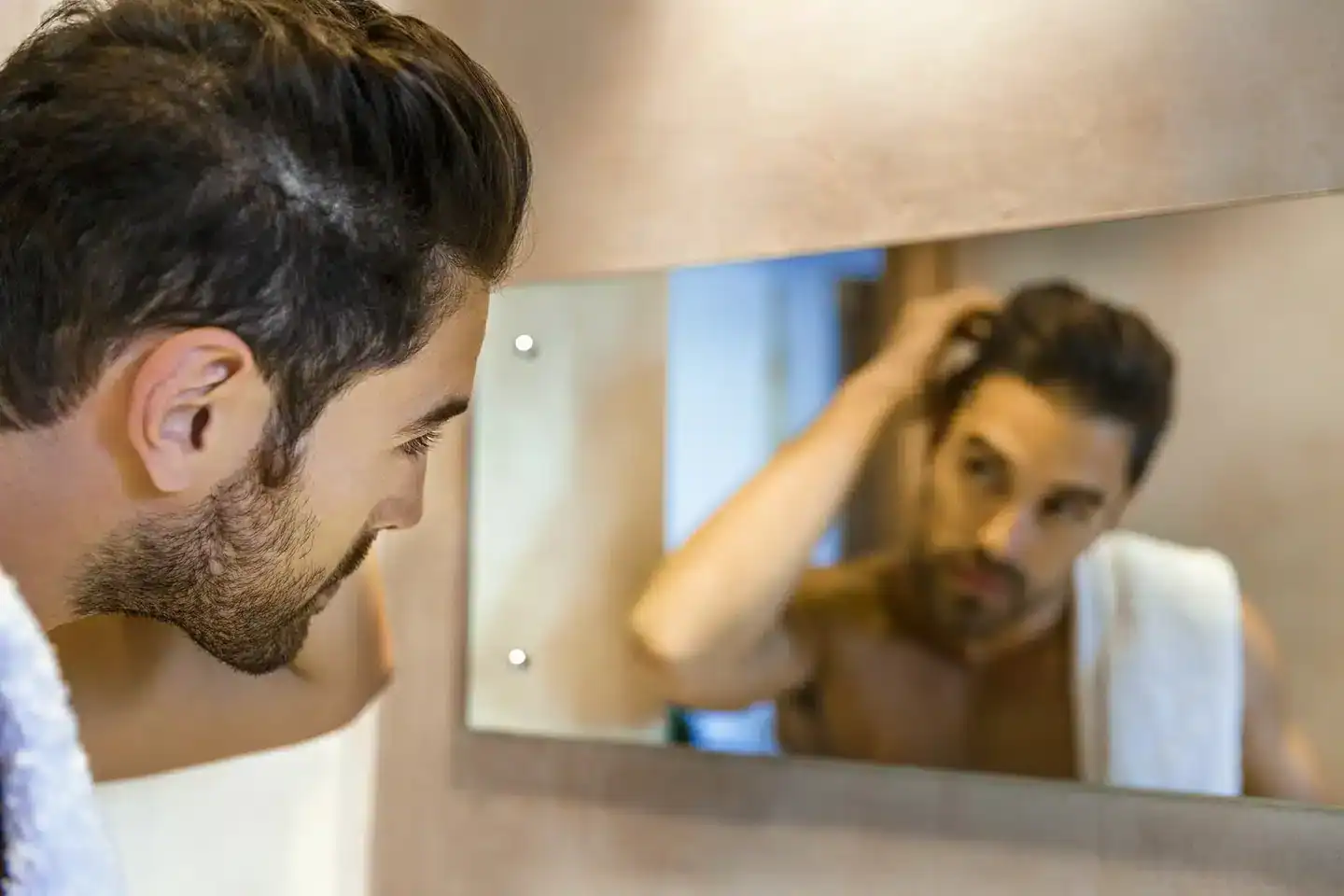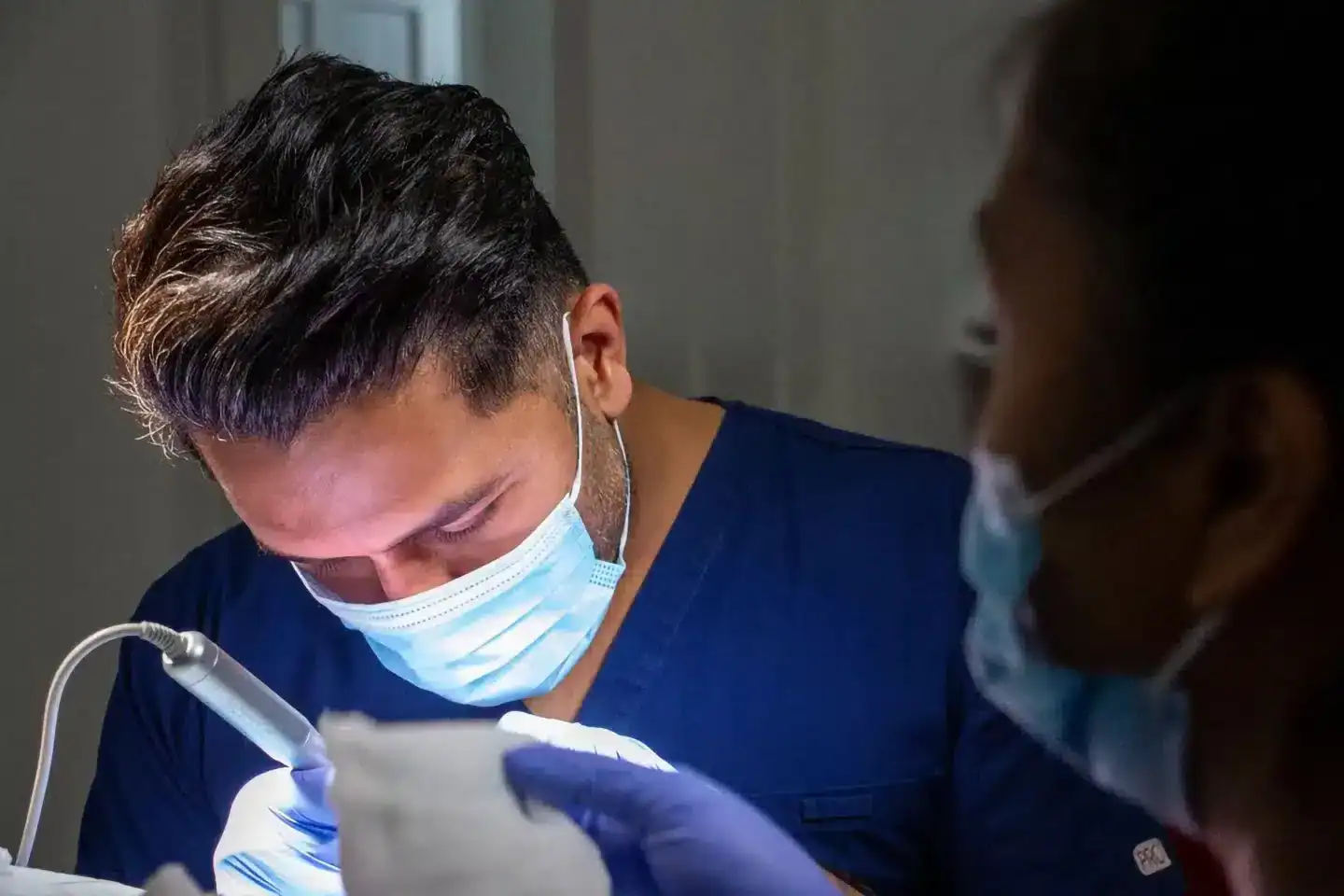At our clinic, Dr. Sharma performs FUE hair transplants in Canada using manual punches that measure 0.6–0.7 mm. Each graft undergoes microscopic inspection, is stored in chilled HypoThermosol, and is selected based on viability to ensure precise placement and natural-looking results.





30+ Years of Combined Surgical Experience
Manual FUE performed by a licensed physician with a background in plastic surgery and microsurgery.
Trained in North America and Europe
Specialized in advanced FUE harvesting, graft handling, and donor conservation protocols.
Over 1,000 Hair Restoration Cases Completed
Grafts extracted and placed entirely by Dr. Sharma, never by technicians or automated devices.
ISHRS Member Surgeon
Practicing to the highest global standards in ethical hair transplantation and surgical excellence.

The FUE procedure involves extracting individual follicular units from the scalp with 0.6–0.7 mm manual punches. Each punch removes a complete graft for transplantation into areas of hair loss.
While FUE is often thought to yield fewer grafts than FUT, this isn’t always true; the number of grafts depends on extraction goals and scalp tissue quality. With precise technique and smaller punches, FUE can be just as effective, or even more so, than the strip method.
The success of this procedure depends on technique precision rather than the device used. Our method ensures accurate placement, faster healing, and natural outcomes without overharvesting the donor site.
Terms like “scarless” or “non-invasive” are inaccurate since each extraction creates a small wound. Although these wounds heal with dot-like scarring that is hard to detect, they still exist.

If you experience bleeding from graft sites, contact the clinic immediately.

At the Canadian Hair Transplant Centre, we begin our surgical planning by accurately mapping the scalp area that requires coverage. While some clinics advertise procedures involving 3,000 or 4,000 or more grafts, these figures can be misleading without proper context. Although the FUE hair transplant cost is a significant consideration, our primary focus is on achieving long-term scalp coverage and preserving donor hair.
Dr. Sharma utilizes trichoscopy and imaging tools, such as TRANSPLANNER®, to measure the area to be restored and determine the number of grafts realistically needed to achieve natural coverage. This method emphasizes long-term donor conservation and protects patients from overpromised, underplanned procedures.
Density must be planned. Safe outcomes rely on surgical math.

FUE restores lost follicles, but it doesn’t prevent future hair loss in untreated areas. Many patients will continue to experience progressive thinning over time, particularly in zones that weren’t transplanted.
These therapies are optional but often recommended for patients seeking to maintain long-term coverage and reduce the likelihood of needing repeat procedures.
Medical therapy should be discussed with your physician before or after surgery. Not all patients are suitable candidates for these treatments.
FUE is a surgical procedure. It should only be pursued after careful reflection, clinical evaluation, and medical clearance.
Consult your family physician.
Underlying health conditions (e.g., autoimmune disease, bleeding disorders, medication interactions) can affect healing and graft survival. A medical review helps ensure you're safe to proceed with outpatient surgery.
Clarify your goals.
Transplants can improve density and restore coverage but they don’t return you to your teenage hairline or create unlimited supply. Ask yourself, "Are my expectations long-term, proportionate, and based on clinical realities?"
Prepare emotionally and mentally.
Hair loss is often tied to self-image and confidence. FUE takes time, commitment, and patience. Results emerge slowly over 12–18 months and may require continued maintenance.
Understand the risks and limitations.
Like any surgery, FUE carries risks like scarring, temporary shock loss, or variable regrowth. There are no guaranteed outcomes. Healing depends on your biology, compliance, and graft handling.
Consult a licensed transplant surgeon.
Only a trained physician can assess your scalp, diagnose pattern loss, and determine if you’re a candidate. Avoid any clinic where technicians or sales staff push procedures before a medical evaluation.
Learn whether you’re a candidate for FUE hair transplant in Canada by booking a consultation with a licensed hair restoration surgeon. You will receive an objective, personalized treatment plan based on your hair loss pattern and donor density.